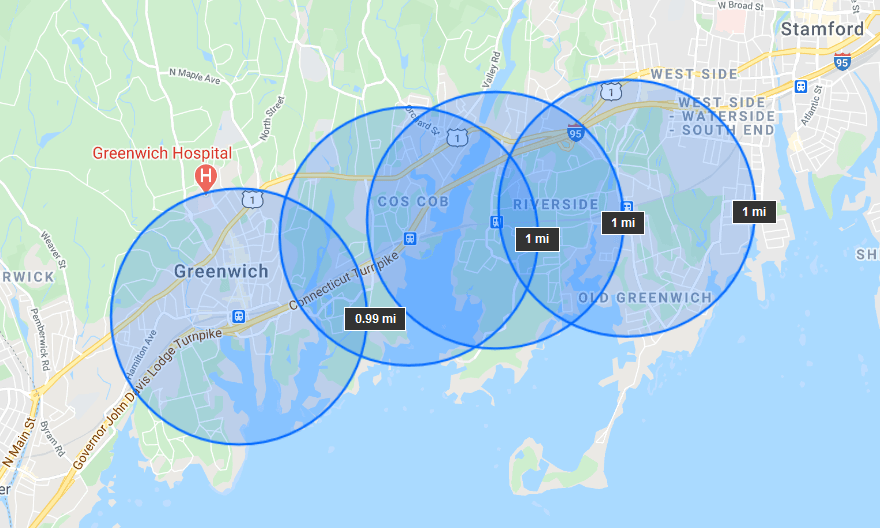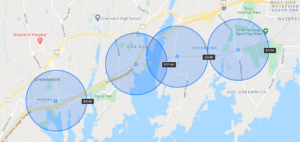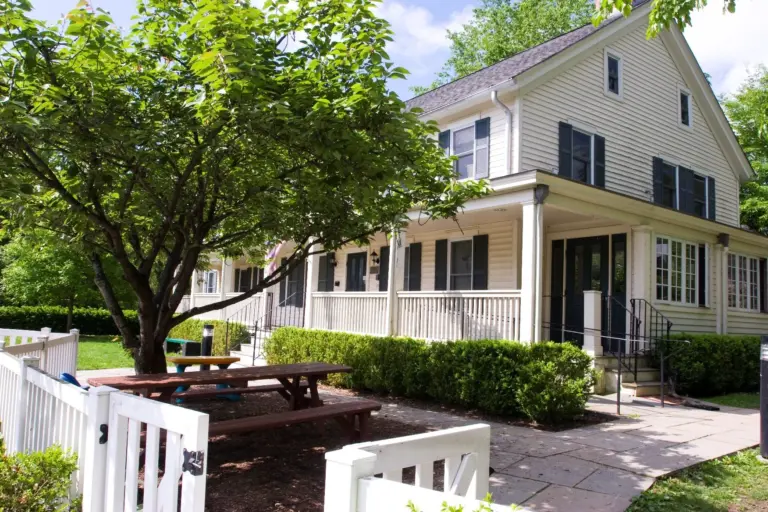
By Mark Pruner
The End of Zoning as You Know It Act, The Out-of-Town Developers Dream Act
I support affordable housing in Greenwich and have done so for decades. Back in the ‘90’s I drafted the original affordable accessory apartment ordinance and helped usher it through the Planning & Zoning Commission. I also was Chair of the Selectmen’s Affordable Housing Commission trying to coordinate multiple town agencies to make Greenwich welcoming to a diversity of people and economic means. I want to preserve the character of Greenwich and enhance its already diverse population. We are about to see a bill that will do just the opposite, while greatly changing Greenwich.
SB 1024 is a blockbuster bill. Just introduced in the Connecticut legislature, it will do a lot of damage to the quality of life in Greenwich, particularly central Greenwich and will produce only a little affordable housing. We also have another bill that wants to create a statewide property tax, which in combination with SB 1024 would create synergistic badness for Greenwich.
What SB 1024 will do if passed, and it has a very good chance of passing, is to bring in developers from outside this area to build lots of multi-family housing to rent mostly at market prices. The proponents of this bill, “Desegregate Connecticut”, are of the opinion that if you build lots of new housing that housing prices will fall, and this will desegregate Connecticut. I think that is extremely unlikely. What you are more likely to get are lots of new downtown and Post Road units renting at premium prices.
There are several underlying ideas that have been incorporated into the bill, but I can’t tell you how they would work even after multiple readings of the bill. Over the years, I’ve worked on a lot of legislation as an attorney, testified twice in front of the Connecticut legislature, was a lobbyist in Washington and spoke at a lot of public hearings here in town on P&Z and other regulations. I thought I was losing it in my old age, because I couldn’t figure out the details of how SB 1024 would work. Luckily for me, and unfortunately for Connecticut, everyone I’ve discussed the bill has said the same thing too; they don’t know how it would work.
Let’s take a look I what I think the bill says.
WHERE COULD YOU BUILD

The bill proposes high-density development around the primary transit station for each municipality. For Greenwich this means our train stations and probably means the Greenwich train station. Unfortunately, the definition of “municipality” is somewhat convoluted so in a worse case situation it would be all four train stations. The bill proposes high-density building within a half mile of the transit station. The odds are that this all of downtown Greenwich, including parts of Mead Point, will be looking at development that under the bill can not be stopped.
The bill however goes on to say that the half-mile radius can be expanded to 1 mile if there is “a public right of way that directly connects to such transit station with adequate sidewalks, crosswalks and other similar pedestrian facilities”. Central Greenwich is a great place to walk, and a 1-mile radius would extend from Greenwich Hospital to most of Belle Haven and Field Point Circle.
In addition to central you Greenwich, you also have two other areas for increased density areas, one is the “Main street corridor” and the other is any single-family zone. Now the main street corridor may only be the Post Road for three-quarters of a mile around the top of Greenwich Avenue or it may mean the entire Post Road from NY to Stamford. I’m guessing the latter but I’m not sure. (It might also mean some of King Street also.) This main street corridor would extend a quarter mile on each side of the Post Road.
WHAT COULD YOU BUILD?
If it is central Greenwich and the Post Road corridor, what could you build? This is the really interesting part; you can build higher density in the transit district and the main street corridor at a “minimum of density of 15 units per acre”. To me that means that on our R-20, 0.46 acre lots, you would have to build at least 7 units.
What I can’t figure out is how big that 7-unit building can be. It might be limited to the present FAR of 4,500 s.f. in the R-20 zone, that would be 15 units of 300 sf. It might be limited to half of the lot size or 10,000 square feet per floor up to 37.5 feet, the height limitation in the R-20 or it might have no limit. Also, the economics would strongly encourage developers do assemblages of properties, and to buy oversized lots so that they could put up much larger buildings.
In the transit district you may not have to have any on-site parking. The presumption is that everyone will take public transit. In the main street corridor developers would only need a max of 2 parking spots per unit. So, a four-bedroom unit would still only need 2 parking spots. Trying to drive on Milbank or E. Elm could get very interesting in 2022.
Then you have the accessory apartments that can be put in any single-family zone. Here it appears that anyone could build a guesthouse of up to 1,000 s.f. with a full kitchen. This can either be in the house, with no need for a separate entrance or it can be in a separate building. Contractors will have field day building elegant pool houses with full kitchens. Parents will be able to send their kids to play in the backyard and not come back until tomorrow, oh and make your own breakfast too.
The bill has no requirement that these actually be rented, they just have to be deed restricted for 10 years. Presently in Greenwich, if you build an affordable accessory apartment you had to certify each year that it was still being rented at an affordable rate. The bill will abolish both our affordable accessory and elderly accessory apartment regulations.
The bill also eliminates three key zoning provisions that presently zoning board members can use to turn down projects. Today projects have “to provide adequate light and air; to prevent the overcrowding of land; [need] to avoid undue concentration of population”. No longer will overcrowding be a factor to be considered or can you complain when the big apartment building blocks the sun or air circulation. Under this bill, density as they call it or overcrowding as we call it, is actually being encouraged in what are our most densely populated areas already.
“AS OF RIGHT” IS WRONG
Probably the most dangerous concept in the whole bill is that all of the above can be done “as of right”. This is the so-called “permit zoning.” What has a very good chance of passing is that a developer who wants to build multi-family units will buy a piece of land and on October 1, 2021 will file one of his floorplans from a prior development with the Building Department. The Building Department then has 65 days, to approve the permit, which would be up to December 9th. The builder can then start construction on December 10, 2021. And, it could well be 20 builders building 20 projects. The only limit is that the town can provide that high density units can only be put on 50% of the downtown lots.
“As of right” means no P&Z review, no public hearings, but still likely lots of lawsuits. Whether the town can get a preliminary injunction to halt the construction of dozens of projects is not at all clear. It’s also not at all clear how many developers would go ahead in such a circumstance.
As I said, I’m an advocate of affordable housing. I think accessory apartments are a good way for widows to stay in their houses, for young couples to buy their first house, for kids who grew up here to find an affordable place to live. The town could have done a better job of telling people about our elderly accessory and affordably accessory apartments, but the town needs some control of these units which permit zoning does not permit.
We also don’t need a statewide property tax. As with all taxes it will start off low, but just as the income tax did, it will grow. Every time legislatures need to plug a budget deficit hole, they can change one number, the state-wide mill rate, and poof the deficit is gone. Then we’ll get more tiers and the politically connected will get exemptions. It’s a really dangerous tax.
SO, WHAT CAN BE DONE
The proponents of this bill have been organizing for years and are trying to apply a machete to every town’s regulations, when towns are very diverse. You can start by contacting your state senator and representatives. Luckily, we have legislators in both the Republican and Democratic caucuses. Given the anti-Trump backlash, that swept in more liberal legislators, stopping this bill will be hard, so the best we may be able to do is amend it, and let’s really hope it can be clarified, so at least we know what the rules are.
The legislators have already sat through a day of testimony, and I mean a day that started on one day and ended in the morning the following day, but I and other people couldn’t testify. There should be more hearings and they should be done regionally.
As to the state property tax; kill it. The state is getting billions of dollars from Washington as part of pandemic relief. Now is not the time for more taxes.
I like to say stay tuned for upcoming developments, but this time I’m urging you to get up and do something, now, before the uncontrolled upcoming developments overwhelm us.
Mark Pruner is a Realtor in Greenwich, CT. He can be reached mark@bhhsne.com or 203-969-7900.




